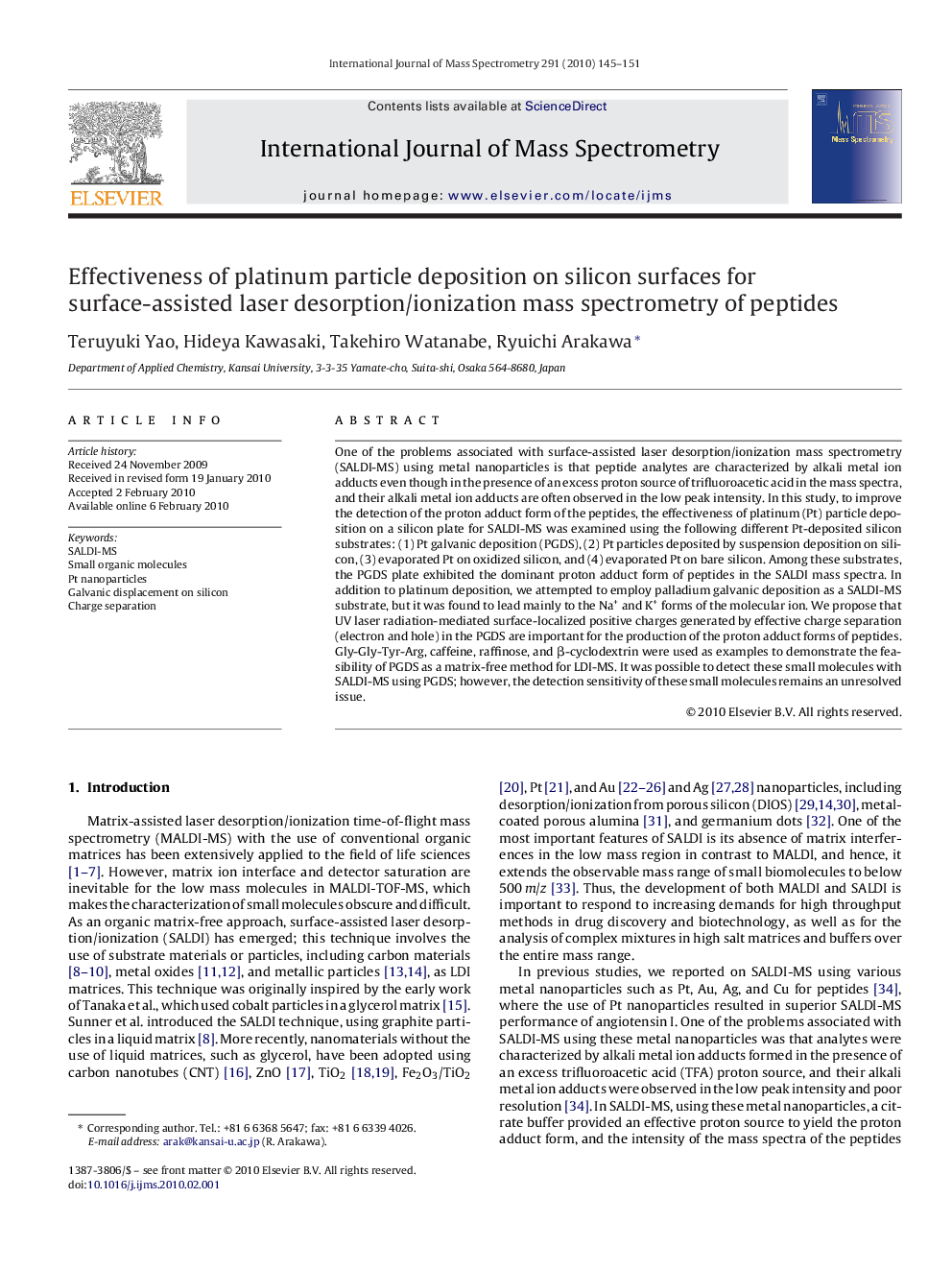| Article ID | Journal | Published Year | Pages | File Type |
|---|---|---|---|---|
| 1193590 | International Journal of Mass Spectrometry | 2010 | 7 Pages |
One of the problems associated with surface-assisted laser desorption/ionization mass spectrometry (SALDI-MS) using metal nanoparticles is that peptide analytes are characterized by alkali metal ion adducts even though in the presence of an excess proton source of trifluoroacetic acid in the mass spectra, and their alkali metal ion adducts are often observed in the low peak intensity. In this study, to improve the detection of the proton adduct form of the peptides, the effectiveness of platinum (Pt) particle deposition on a silicon plate for SALDI-MS was examined using the following different Pt-deposited silicon substrates: (1) Pt galvanic deposition (PGDS), (2) Pt particles deposited by suspension deposition on silicon, (3) evaporated Pt on oxidized silicon, and (4) evaporated Pt on bare silicon. Among these substrates, the PGDS plate exhibited the dominant proton adduct form of peptides in the SALDI mass spectra. In addition to platinum deposition, we attempted to employ palladium galvanic deposition as a SALDI-MS substrate, but it was found to lead mainly to the Na+ and K+ forms of the molecular ion. We propose that UV laser radiation-mediated surface-localized positive charges generated by effective charge separation (electron and hole) in the PGDS are important for the production of the proton adduct forms of peptides. Gly-Gly-Tyr-Arg, caffeine, raffinose, and β-cyclodextrin were used as examples to demonstrate the feasibility of PGDS as a matrix-free method for LDI-MS. It was possible to detect these small molecules with SALDI-MS using PGDS; however, the detection sensitivity of these small molecules remains an unresolved issue.
Graphical abstractWe found that the proton adduct from of peptides was dominant in SALDI mass spectra using a galvanic deposition Pt on bare silicon, in contrast to the use of Pd on silicon.Figure optionsDownload full-size imageDownload high-quality image (153 K)Download as PowerPoint slide
